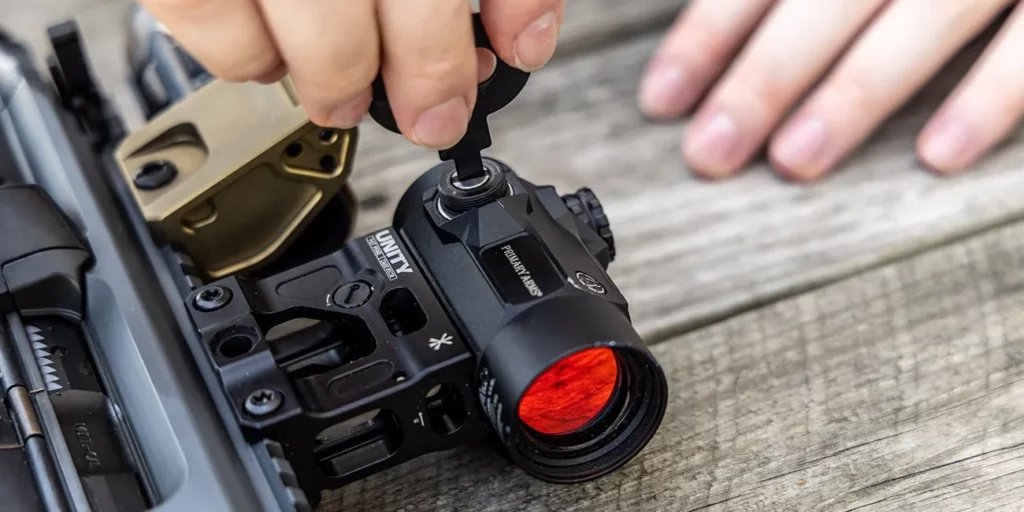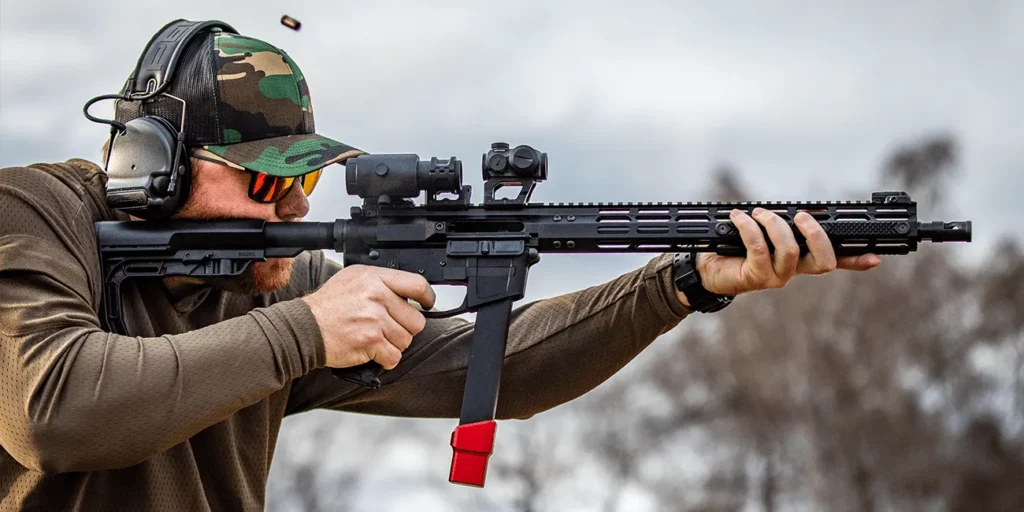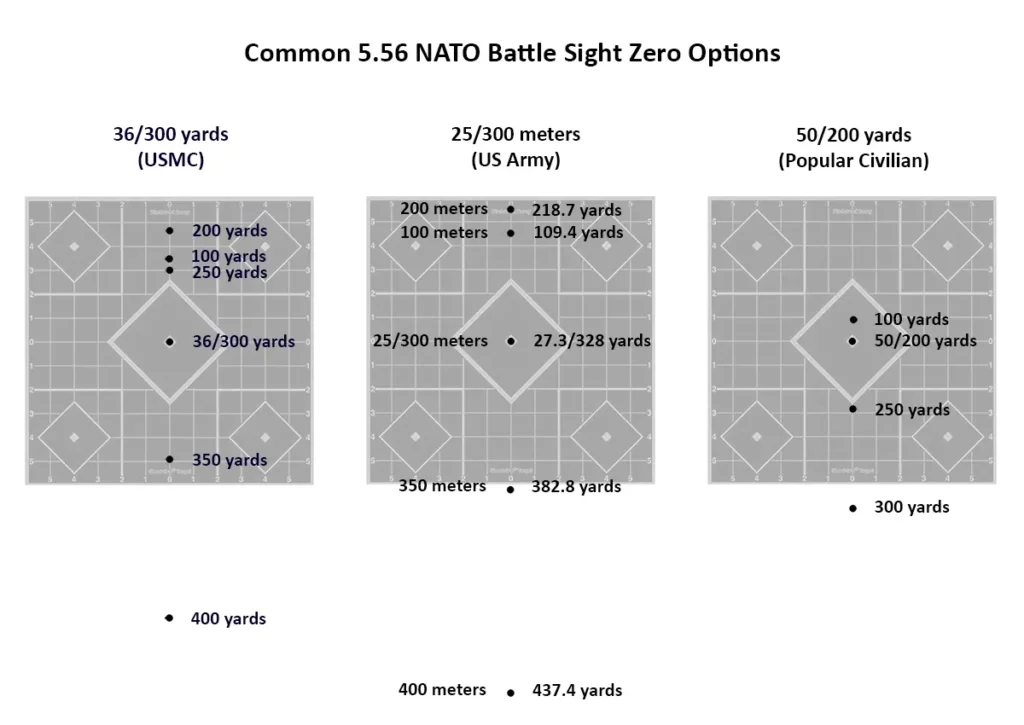New shooters, and even those who have been shooting a long time, can easily get confused and frustrated when trying to sight in their rifles. It’s not quite as easy as it seems like it should be.
We’ve got the answer for you, though. Here’s the simple, easy to remember hack that’ll save you time when sighting in your red dot sight.
MOVING THE POINT OF IMPACT
You’ve probably seen that, on any rifle optic, there will be a direction marked on the scope turrets. Usually little arrows placed next to a U for “Up” and an R for “Right” on the elevation and windage knobs, respectively. This indicates where your point of impact will shift when you turn the turret in that direction. That’s the ONE thing that confuses more people than anything else.
In a sense, it’s easier to think about it as if you’re using your turrets to steer the bullet hole on the paper to the target’s center.
If you’ve got your reticle centered on the paper target, and your bullets are hitting low, you want to turn in the direction indicated for “Up” to move the point of impact higher. If you are hitting to the left, turn in the direction indicated for “Right” to move the point of impact to the right.
It’s that easy. Just remember that you’re shifting the bullet’s point of impact and you’ll save a lot of frustration.
Here’s some more tips to maximize your range time when sighting in a red dot.
HOW TO MAKE ADJUSTMENTS
Make sure to bring a simple, medium sized flathead screwdriver with you. The flat blade matches up with the shape of the slot better than a coin or cartridge rim does, allowing you to feel each turret click and reducing the chance that you will damage the turret or scratch up the housing. Just take our word for it, it’ll save you heartache. Throw one in your range bag and don’t worry about needing to remember it ever again.
Because the internals of these turrets are very finely machined and tiny components, you should protect them by making your clicks smoothly and slowly. If the turret stops turning, don’t try to force it. You’ve reached the end of the turret’s travel and something is probably wrong with how the optic has been mounted to the rifle, accounting for the need for extreme turret adjustments. Trying to force additional point of impact adjustment beyond the turret’s travel will only break your red dot’s internals and ruin your day. Don’t do it!
ADJUST ONE DIRECTION AT A TIME
Fire a consistent 3-shot group and then decide whether you want to adjust elevation or windage first. Try to make all your adjustment at once.
Shooters unsure of their click values or the math involved will often just count three or four clicks and shoot again, slowly working their way towards the center of the target in a long string of bullet holes.
While it’s fun to shoot through a lot of boxes of ammo, this high volume of fire method can heat up your rifle barrel, causing a point of impact shift issue. Once the barrel cools off again, the point of impact returns to a slightly different location and your rifle isn’t as perfectly sighted in as you originally thought. Instead, measure the difference between your shot group’s location and your point of aim, and divide it by the distance covered by each turret click.
1 Minute of Angle (MOA) covers 1.047 inches at 100 yards, with most shooters preferring to round that figure off to just 1 inch. Most red dots feature either 1 MOA or 0.5 MOA-per-click turrets, so at 100 yards a 1 MOA-per-click optic will shift its point of impact about 1 inch per click, and a 0.5 MOA-per-click optic will shift its point of impact about half-inch per click. You can use a sight-in style target featuring a 1-inch grid pattern or bring a tape measure and measure the distance between your point of aim and your shot group’s point of impact to determine how much adjustment is needed.
If you’re sighting in at less than 100 yards, some easy division will help you determine how far one click will shift your bullet’s point of impact at, say, 25 yards. You are 1/4th as far away from the target at 25 yards as you’d be at 100 yards, so your adjustment clicks will be 1/4th as “effective” at moving your point of impact. If a 1 MOA adjustment at 100 yards is roughly an inch, at 1/4th the distance it’ll be 1/4th of an inch. No brainer.
Here’s a couple of quick reference charts that provide the number of clicks needed to move the point of impact 1 inch given a certain MOA Click value and distance, as well as the distance in inches, roughly, that one click will move the point of impact given a certain MOA click value and distance.
Get the accuracy you want out of your rifle and red dot sight. It’s not hard, just take it slow, shoot as accurately as you can, be safe and have fun!
Did you enjoy this article? Check out some other recent posts from the Primary Arms Blog!







